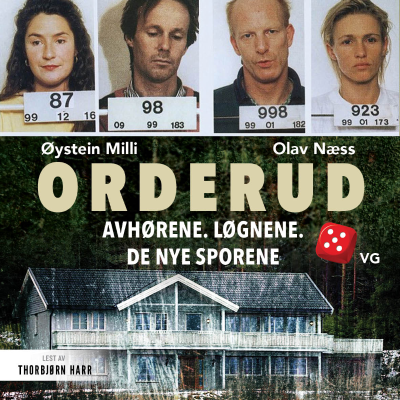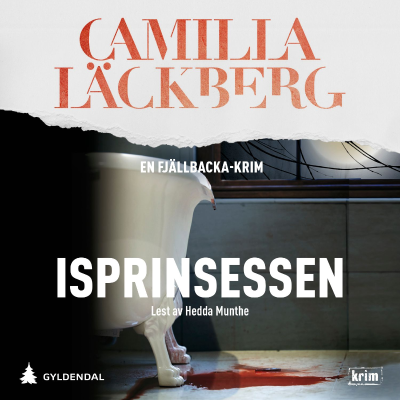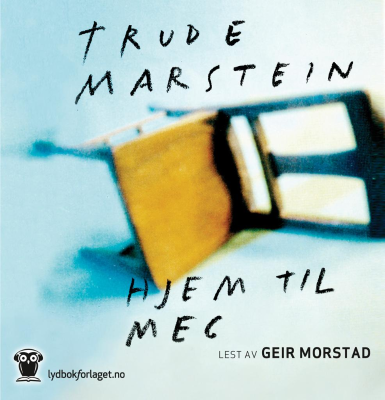
The Jeff Lewis Trumpet Podcast
Podkast av Jeff Lewis: Freelance Trumpet Player and Educator
Prøv gratis i 14 dager
99 kr / Måned etter prøveperioden.Avslutt når som helst.

Mer enn 1 million lyttere
Du vil elske Podimo, og du er ikke alene
Rated 4.7 in the App Store
Les mer The Jeff Lewis Trumpet Podcast
Trumpet Life playing and teaching
Alle episoder
50 Episoder🎧 EPISODE SUMMARY: IN THIS EPISODE OF “THE JEFF LEWIS TRUMPET PODCAST”, I EXPLORE THE EMOTIONAL “COLORS” OF CHORDS—MAJOR, MINOR, DIMINISHED, AND AUGMENTED. LEARN HOW TO HEAR EACH CHORD BY ITS INTERVALS AND EMOTIONAL QUALITY. A PERFECT GUIDE FOR TRUMPET PLAYERS BUILDING THEIR EAR TRAINING SKILLS! 🧠 KEY TOPICS: * MAJOR CHORDS: BRIGHT AND HAPPY (C–E–G) * MINOR CHORDS: INTROSPECTIVE AND COOL (C–EB–G) * DIMINISHED CHORDS: TENSE AND SPOOKY (C–EB–GB) * AUGMENTED CHORDS: DREAMY AND MYSTERIOUS (C–E–G#) * IMPORTANCE OF RECOGNIZING MAJOR AND MINOR 3RDS 📌 PREVIOUS EPISODE REFERENCE: BE SURE TO REVISIT THE LAST EPISODE (JLTP 058-) WHERE WE COVERED INTERVAL RECOGNITION BY EAR—IT’S FOUNDATIONAL FOR TODAY’S CONTENT! YOU CAN FIND EPISODE 58 HERE; https://www.jefflewistrumpet.com/jltp-058-music-theory-basics-part-1-intervals/ 🎺 PRACTICE CHALLENGE: BUILD AND COMPARE C MAJOR, MINOR, DIMINISHED, AND AUGMENTED CHORDS. NOTICE THE EMOTIONAL DIFFERENCE. ✅SUBSCRIBE TO MY NEWSLETTER AND RECEIVE MY FREE EBOOK “11 SCALES FOR JAZZ IMPROVISATION”; HTTPS://JEFFLEWISTRUMPET.US14.LIST-MANAGE.COM/SUBSCRIBE?U=9F983684BEB3F44B8E9335B5A&ID=68F0F3E626
In Episode 58 of “The Jeff Lewis Trumpet Podcast”, I break down one of the most essential skills for any trumpet player or musician—how to recognize musical intervals by ear, eye, and on your instrument. Learn how intervals work, why they matter, and how to identify them using classic songs, piano examples, and trumpet-focused exercises that will strengthen your ear, improve your improvisation, and sharpen your reading. Whether you’re a beginner or a seasoned brass player, this episode will help you level up your musicianship. Be sure to stick around till the end so you can test your ear and try to identify the interval examples! In this episode, you will learn; * 🎵 What musical intervals are and why they’re essential for trumpet players * 👂 How to recognize intervals by ear using well-known songs * 🎹 How to hear and visualize intervals on piano and apply them to trumpet * 🎺 How different intervals feel on the trumpet in terms of valve combinations and embouchure * 🎶 Song examples that help lock in each interval (e.g., “Jaws” for minor 2nd, “Happy Birthday” for major 2nd) * 🎧 Ear training tips and tricks to improve your listening and transcribing skills * 🗣️ The power of singing intervals to internalize them before playing ✅Subscribe to my newsletter and receive my free ebook “11 Scales For Jazz Improvisation”; https://jefflewistrumpet.us14.list-manage.com/subscribe?u=9f983684beb3f44b8e9335b5a&id=68f0f3e626 ✅Patreon; https://www.patreon.com/JeffLewisTrumpet ✅Website; https://www.JeffLewisTrumpet.com
In this episode of The Jeff Lewis Trumpet Podcast, I discuss an easy way to develop your sound by using rhythmic variety in your solos. In this particular episode, you will learn; * How to play 2, 3, and 4 note phrases * How to create rhythmic variety using short phrases * How to use chord tones to build harmonic clarity Items mentioned in this podcast; Blue Mitchell’s solo on “I’ll Close My Eyes” [https://www.jefflewistrumpet.com/blue-mitchells-solo-on-ill-close-my-eyes/] [https://www.jefflewistrumpet.com/wp-content/uploads/2025/04/Ill-Close-My-Eyes.jpg]https://www.jefflewistrumpet.com/blue-mitchells-solo-on-ill-close-my-eyes/Parts 1 and 2 from this Basic Improv series [https://www.jefflewistrumpet.com/wp-content/uploads/2025/04/JLTP-054-Jazz-Improv-Basics-Scales1-1.png]https://www.jefflewistrumpet.com/jltp-054-the-jazz-improv-workshop-mastering-the-basics-scales/ [https://www.jefflewistrumpet.com/wp-content/uploads/2025/01/JLTP-056-mastering-jazz-improv-beginners-guide-part-two-.png]https://www.jefflewistrumpet.com/jltp-056-mastering-jazz-improv-basics-beginners-guide-part-2/ Louis Armstrong’s version of Dinah on YouTube, [https://www.youtube.com/watch?v=BhVdLd43bDI]where he uses a two-note “theme” to develop an entire solo; https://www.youtube.com/watch?v=BhVdLd43bDI My Descending Dominant 7 chord play-along track on YouTube; [https://www.youtube.com/watch?v=HH7SjaYlOUg] https://www.youtube.com/watch?v=HH7SjaYlOUg
In this episode of The Jeff Lewis Trumpet Podcast, I review the importance of the ii V I chord progression, how to apply scales to that progression, and an easy ii V I lick in all 12 keys. Stick around until the end of the podcast, grab your horn, and let’s trade 4’s in the Key of C! In this particular episode, you will learn; * The notes in a ii V I chord progression in C Major and the scales that go with the chords * Dorian and Mixolydian modes in C * An easy “short” ii V I lick in C * What a digital pattern is An easy ii V I lick in all 12 keys [https://www.jefflewistrumpet.com/wp-content/uploads/2025/01/ii-V7-I-Lick-3-short-12.pdf][https://www.jefflewistrumpet.com/wp-content/uploads/2025/01/ii-V7-I-Lick-3-short-12.jpg]https://www.jefflewistrumpet.com/wp-content/uploads/2025/01/ii-V7-I-Lick-3-short-12.pdf Patreon; https://www.patreon.com/JeffLewisTrumpet Website; https://www.JeffLewisTrumpet.com Facebook; https://www.facebook.com/JeffLewisTrumpet/ Instagram; https://www.instagram.com/jefflewis6519/ Podcast on iTunes; https://itunes.apple.com/us/podcast/the-jeff-lewis-trumpet-podcast/id1333984769?mt=2&at=1000lHQ6
In this episode of The Jeff Lewis Trumpet Podcast, I go over how to improvise over the jazz classic “Blue Bossa” for beginning, intermediate, and advanced players. In this episode you will learn; * Three different levels of improvisation from beginning to advanced * Which scales to use over all of the chords from easy to difficult * Melodic minor, harmonic minor, diminished, and altered scale harmony DOWNLOAD THE FREE COLOR-CODED PDFS FOR ALL INSTRUMENTS BELOW AND FOLLOW ALONG WITH THE PODCAST. [https://www.jefflewistrumpet.com/wp-content/uploads/2024/11/1.png]https://www.jefflewistrumpet.com/wp-content/uploads/2024/11/Blues-Bossa-Bb.pdf [https://www.jefflewistrumpet.com/wp-content/uploads/2024/11/1-1.png]https://www.jefflewistrumpet.com/wp-content/uploads/2024/11/Blue-Bossa-Eb.pdf [https://www.jefflewistrumpet.com/wp-content/uploads/2024/11/1-2.png]https://www.jefflewistrumpet.com/wp-content/uploads/2024/11/Blue-Bossa-Concert.pdf [https://www.jefflewistrumpet.com/wp-content/uploads/2024/11/1-3.png]https://www.jefflewistrumpet.com/wp-content/uploads/2024/11/Blue-Bossa-Bass.pdf

Rated 4.7 in the App Store
Prøv gratis i 14 dager
99 kr / Måned etter prøveperioden.Avslutt når som helst.
Eksklusive podkaster
Uten reklame
Gratis podkaster
Lydbøker
20 timer i måneden

































